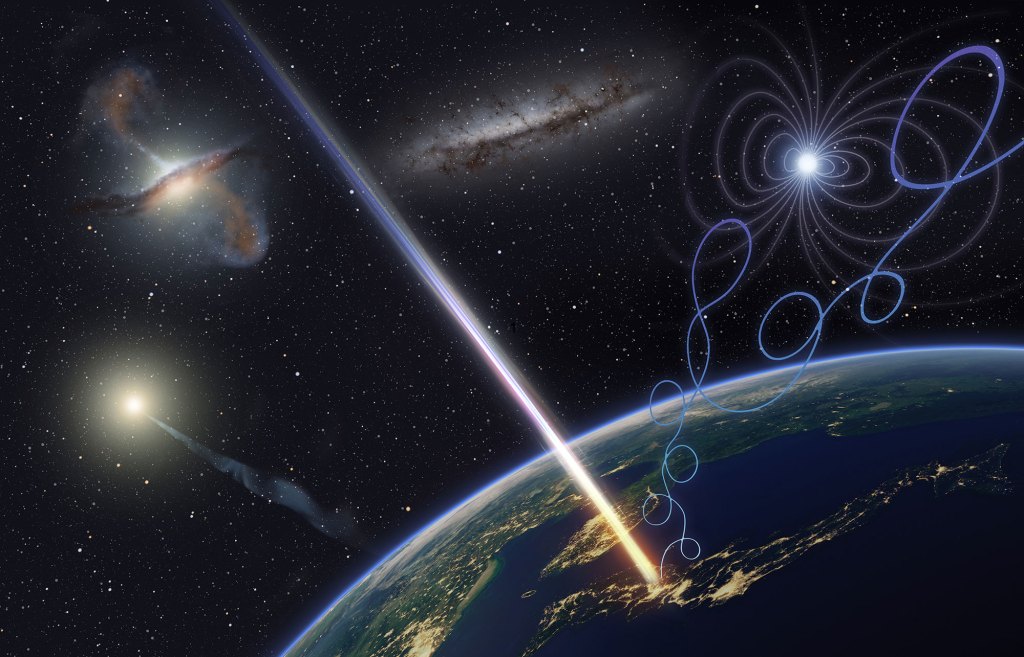Scientists have shed light on a longstanding mystery about ancient supermassive black holes and the galaxies they inhabit by peering at incredibly luminous objects that existed in the early universe, just 500 million to one billion years after the Big Bang, reports a new study.
Black holes are mind-boggling regions of the cosmos that contain so much mass in such a small space that nothing, not even light, can escape their gravitational forces. Though there are unanswered questions about black holes of all sizes and ages, the supermassive black holes that inhabited the early universe are particularly inscrutable.
Videos by VICE
For instance, it’s unclear how these monster objects became so gargantuan—with some reaching masses one billion times that of the Sun—so early in the timeline of the universe. Moreover, scientists have long been puzzled about what slowed those early growth spurts and guided supermassive black holes into a more symbiotic development with their host galaxies.
Now, scientists led by Manuela Bischetti, a postdoctoral researcher for Italy’s National Institute for Astrophysics at the Astronomical Observatory of Trieste, have made the unexpected discovery that extremely strong winds from early supermassive black holes likely slowed their growth. Bischetti and her colleagues observed 30 quasars, extremely luminous objects often found in the center of ancient galaxies, and identified these winds as an initial stage of “black hole feedback,” a process that is central to the development of modern galaxies, including our own Milky Way, according to a study published on Wednesday in Nature.
“This result highlights for the first time that black hole feedback has an important role in shaping the early growth phases of both black holes and galaxies, and that the strength of black hole feedback may evolve with time,” Bischetti said in an email. “This provides key constraints for theoretical models of galaxy evolution.”
Supermassive black holes exist at the center of most galaxies; for instance, the Milky Way contains an object that is about four million times as massive as the Sun. Scientists have found an oddly specific correlation between the masses of black holes and their host galaxies in what’s known as the “low-redshift” universe, which is another way to describe the modern universe we live in, where light waves are not as stretched into red wavelengths as more ancient light from the early “high-redshift” universe. Low-redshift galaxies tend to be about 100 times more massive than their central black holes, a ratio that is so consistent that it hints at a symbiotic growth process between the black holes and their galaxies, in which the structures stabilize each others’ development.
However, as Bischetti explained, “this is not true for the high redshift universe and for the quasars in our study, for which we observe that the black-holes are overmassive (ten times more massive) with respect to their host galaxies.”
“This implies that, during the first billion years of the universe, black holes must have grown more rapidly than their host galaxies,” she added.
Bischetti and her colleagues were able to study these brilliant quasars with “a high signal-to-noise” ratio by capturing 250 hours of observations with the “X-shooter” spectrograph at the European Southern Observatory’s Very Large Telescope in Chile, according to the study. The team hoped the X-shooter would provide a more detailed glimpse of the winds, or outflows, fueled by these early supermassive black holes, which tear through early galaxies, influencing their development.
“This research was motivated by the fact that, although astronomers expect black holes to strongly affect the evolution of galaxies when the universe was about one billion years old, there are very few observations with sufficient quality to either support or reject this,” Bischetti said.
To their astonishment, the researchers discovered that black hole winds in the early universe were extremely common and about 20 times more powerful than those in the modern universe. Some outflows in their observations shot into space at 17 percent the speed of light, a process that redistributes energy into their host galaxies and likely slammed the brakes on early black hole growth, possibly kicking off the stable feedbacks we see in galaxies today.
“We were expecting to find that black hole winds in the young universe work similarly to what we observe at later epochs, in the universe closer to us,” she added. “Instead, we were very surprised and excited by the great deal of very energetic winds that we discovered, as this points towards a strong evolution of black hole feedback with time.”
While the study offers a compelling look at this major transition in the relationship between galaxies and their central black holes, Bischetti said it will take more observations to unravel further details about this dance between cosmic giants at the edge of space and time.
Ultimately, the researchers hope to use next generation telescopes, including the recently launched James Webb Space Telescope and the forthcoming Extremely Large Telescope in Chile, to zoom into the influence of the black hole winds on early galaxies and their stars.
“We now wish to follow-up this study by understanding whether and how the observed black hole outflows affect the growth of the host galaxy,” Bischetti said, adding that current telescopes can only spot “the brightest tip of the iceberg of the population of quasars at these very high redshifts.”
“We expect that intrinsically fainter objects will show different properties in terms of outflows with respect to the XQR-30 sample”—referring to the 30 quasars observed in this study—”but at the moment it is extremely challenging to test this hypothesis,” she concluded.




